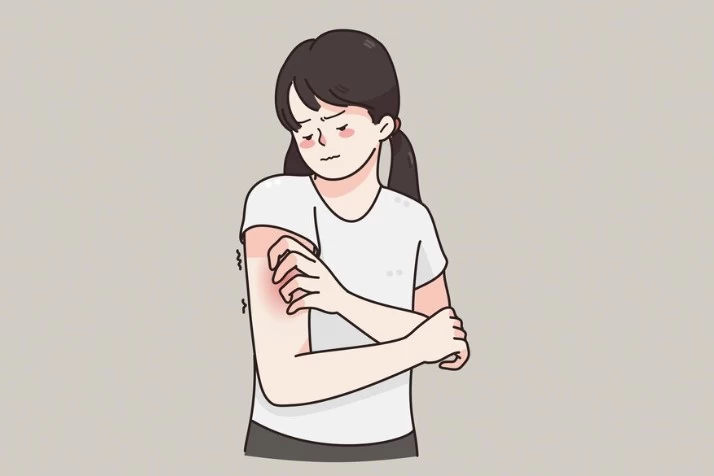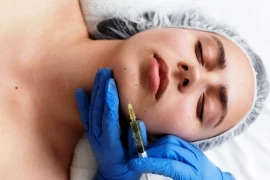
Increased Risk of Scabies During the School Term: How to Protect Your Children
- Increased Risk of Scabies During the School Term: How to Protect Your Children
- What Is Scabies and What Are Its Symptoms?
- How Does Scabies Spread?
- Why Is the Risk of Scabies Higher During the School Term?
- Diagnosis and Treatment of Scabies
- Preventing Scabies in Schools
Scabies is a highly common skin infection that can significantly impact public health. This condition is caused by a microscopic parasite called Sarcoptes scabiei, which burrows into the skin. Scabies is intensely itchy and irritating, and it spreads rapidly in crowded settings through direct skin contact.
As a dermatologist, I will discuss the symptoms of scabies, how it spreads, and why children are at a higher risk during the school term. I will also share key tips to protect your children from this uncomfortable condition.
What Is Scabies and What Are Its Symptoms?
Scabies causes severe itching and red, rash-like lesions due to the parasite burrowing into the skin. As the mites create tunnels on the surface, they lay eggs, prompting an allergic reaction from the body. This leads to itching, which is often unbearable, especially at night.
Key symptoms include:
- Intense itching (worsening at night)
- Red rashes and blisters
- Fine lines (scabies tunnels) between the fingers, wrists, elbows, and waist
- Secondary infections from bacteria entering scratched areas
The itching results from the body's reaction to substances released by the mites, making scabies highly uncomfortable for those affected.
How Does Scabies Spread?
Scabies spreads through direct skin-to-skin contact. While brief contact is less likely to transmit the mites, prolonged skin contact is sufficient for transmission. The parasite typically passes from person to person via close physical contact. Sharing clothing, bedding, or towels with an infected person can also facilitate its spread.
Within families and households, scabies can spread quickly. The risk is even higher in crowded environments like schools, where children are in close proximity to each other throughout the day.

Why Is the Risk of Scabies Higher During the School Term?
School-aged children spend much of their day in close contact with classmates. Activities such as playing games, sitting in shared spaces, or holding hands make skin contact unavoidable. Additionally, children's hygiene practices may not be as rigorous as needed to prevent the spread of infections like scabies.
Classrooms, shared items (coats, sportswear, towels), and densely populated areas provide ideal conditions for the parasite to spread. Children with scabies may not always show symptoms immediately, or they may not communicate their discomfort, allowing the infection to go unnoticed and spread further.
Factors contributing to the rapid spread of scabies in schools include:
- Crowded classrooms
- Frequent physical contact during games and activities
- Shared personal items
- Children not recognizing or reporting symptoms
Diagnosis and Treatment of Scabies
A diagnosis of scabies is typically made through clinical examination. As a dermatologist, I assess the patient’s complaints and search for telltale signs, such as scabies tunnels and characteristic rashes. In some cases, I may take a skin scraping to examine under a microscope for confirmation.
Treatment generally involves topical creams and lotions designed to kill the mites near the surface of the skin. These medications are applied over the entire body (excluding the head) and left on for a specified period. It’s also crucial that all family members and close contacts receive treatment to prevent re-infestation.
To prevent re-infection, it is important to follow these steps:
- Wash clothing, bed linens, and towels at high temperatures
- Ensure that all household members are treated
- Pay attention to the hygiene of shared items
Preventing Scabies in Schools
To protect children from scabies in school settings, the following measures should be implemented:
- If a case of scabies is detected, parents and the school administration should be immediately informed.
- Children should be encouraged to follow hygiene rules, such as washing hands frequently and not sharing personal items.
- During activities where physical contact is common, cleanliness and hygiene standards should be maintained.
- Infected children should stay home during the treatment period, and all students in close contact should be screened for scabies.
In conclusion, while scabies is common, it is a treatable condition. Given its potential for rapid spread, especially in school environments, it’s vital for parents and schools to be vigilant. Teaching children how to protect themselves and emphasizing hygiene practices can significantly reduce the transmission of scabies.

Spc. Dr. Enkhjargal Egi Losol
Dermatology Specialist





